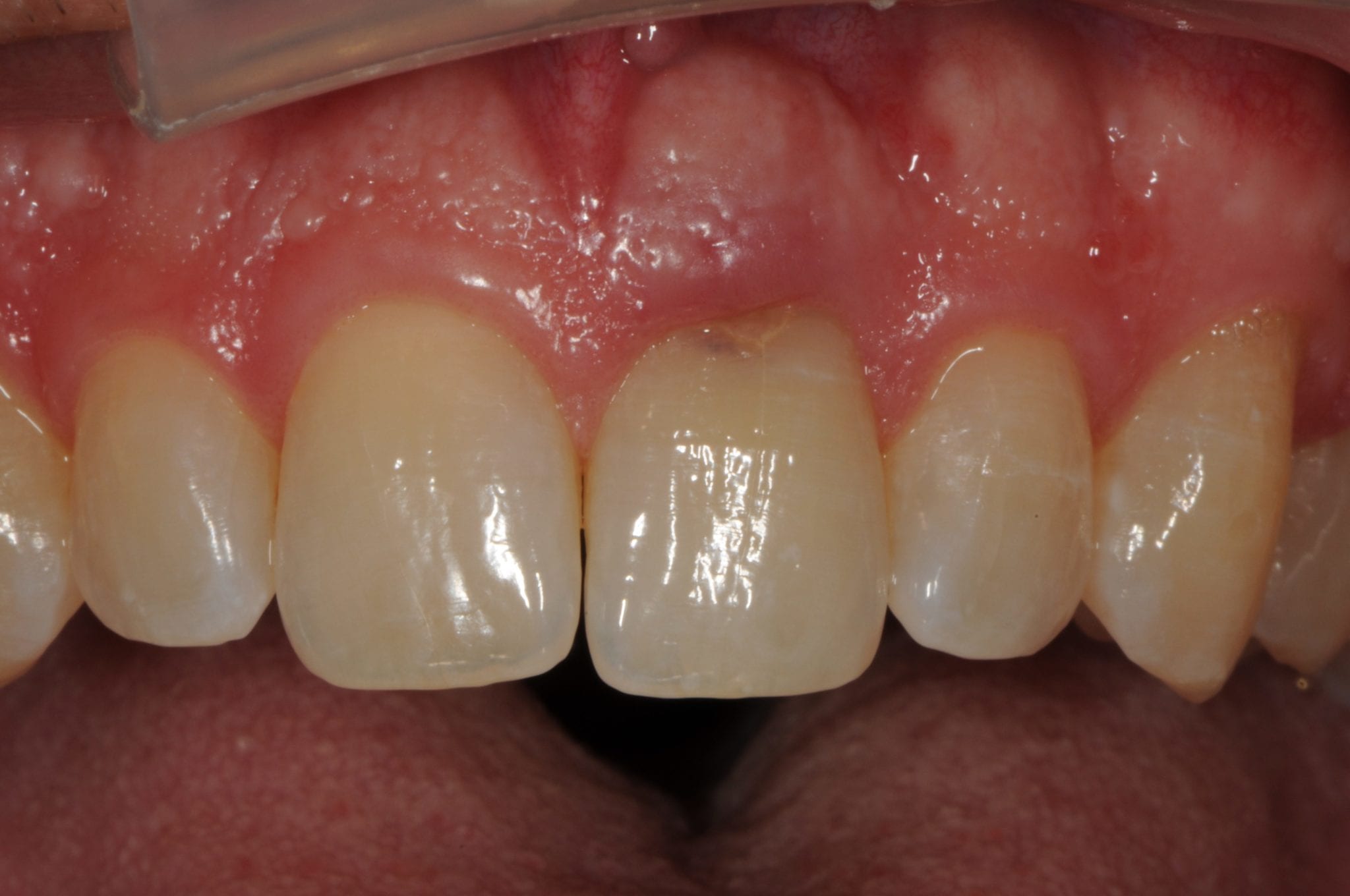Cavity Front Of Tooth

The front of a tooth, also known as the anterior surface, is a critical area that can be prone to cavities due to its visibility and function in the oral cavity. When we refer to a cavity on the front of a tooth, we’re typically talking about decay that occurs on the surface of the tooth that faces the lips or cheeks. This type of decay can be particularly concerning because it’s not only aesthetically unpleasing but can also compromise the structural integrity of the tooth.
Cavities on the front of a tooth often begin as small, seemingly insignificant lesions. However, if left untreated, these lesions can progress rapidly, potentially leading to extensive damage that requires more invasive and costly treatments. The onset of such decay is usually associated with the demineralization of tooth enamel, which is the hard, outer layer of the tooth. This demineralization process is typically the result of acid production by bacteria in the mouth, particularly in the presence of fermentable carbohydrates like sugars and starches.
One of the challenges in identifying cavities on the front of a tooth is that they may not always cause symptoms in the early stages. Patients might not notice anything out of the ordinary until the cavity has progressed and starts causing sensitivity or pain, especially when consuming hot, cold, sweet, or sour foods and beverages. By the time symptoms appear, the decay may have already penetrated through the enamel and into the dentin, a softer layer of tissue beneath the enamel, making the condition more serious.
Diagnosing cavities on the front of a tooth involves a combination of visual examination, radiographic (x-ray) analysis, and sometimes the use of specialized tools like a dental explorer to feel the surface of the tooth for any soft spots, which could indicate decay. Fluoride treatments and good oral hygiene practices can help prevent tooth decay or slow its progression. However, once a cavity forms, the standard treatment involves removing the decayed portion of the tooth and filling the resulting cavity with a restorative material.
The choice of restorative material depends on several factors, including the extent of the decay, the location of the cavity, and the patient’s preferences and budget. Commonly used materials include amalgam (for posterior teeth or when aesthetics is not a primary concern), composite resin (a tooth-colored material that blends well with the natural teeth and is often used for anterior teeth), gold, and ceramic or porcelain. In cases where the decay is extensive, a crown might be necessary to cover the entire tooth, providing strength and protecting it from further damage.
Preventing cavities on the front of a tooth, or any tooth for that matter, is significantly easier and less costly than treating them. Regular brushing with fluoride toothpaste, flossing at least once a day, and rinsing with a fluoride mouthwash can significantly reduce the risk of tooth decay. Limiting sugary and acidic foods and drinks, which contribute to the production of harmful acids, is also crucial. Additionally, visiting a dentist for check-ups and cleanings at least twice a year can help in the early detection of cavities, allowing for prompt treatment before the condition worsens.
Common Locations for Cavities on the Front of a Tooth
- Incisal Edge: The cutting edge of the front teeth, which can be susceptible to decay due to its shape and function.
- Labial Surface: The surface of the tooth facing the lips, where plaque can accumulate if not cleaned properly.
- Interproximal Areas: The spaces between the front teeth, where food particles and plaque can get trapped, leading to decay.
Prevention Strategies
- Regular Dental Check-Ups: Early detection of decay allows for less invasive treatments.
- Good Oral Hygiene: Brushing, flossing, and rinsing with fluoride mouthwash to reduce plaque and bacteria.
- Dietary Modifications: Reducing the intake of sugary and acidic foods and drinks.
- Fluoride Applications: Professional fluoride treatments can help strengthen tooth enamel and prevent decay.
Conclusion
Cavities on the front of a tooth are not just aesthetically concerning but can also lead to significant oral health issues if left untreated. Prevention through good oral hygiene practices, dietary modifications, and regular dental visits is key. Early detection and treatment can prevent the need for more extensive and costly procedures, preserving the health and integrity of the teeth.
What is the most common cause of cavities on the front of a tooth?
+The most common cause of cavities on the front of a tooth is the demineralization of tooth enamel due to acid production by bacteria in the presence of fermentable carbohydrates.
How can I prevent cavities on my front teeth?
+Preventing cavities involves regular brushing with fluoride toothpaste, flossing, rinsing with a fluoride mouthwash, limiting sugary and acidic foods and drinks, and visiting a dentist for regular check-ups and cleanings.
What are the symptoms of a cavity on the front of a tooth?
+Symptoms may include sensitivity or pain, especially when consuming hot, cold, sweet, or sour foods and beverages. However, cavities may not cause noticeable symptoms until they have progressed.

